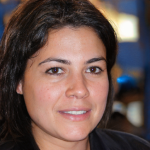Poliomyelitis, shortened to polio, has been around for thousands of years. There is still no cure, but at the peak of its devastation in the United States, Dr. Jonas Salk introduced a way to prevent it. Polio attacks the nerve cells and sometimes the central nervous system, causing muscle wasting, paralysis, and even death.
The disease, whose symptoms are flu-like, mostly affected children. In the first half of the 20th century, polio epidemics were becoming more devastating. Salk developed a polio vaccine while working at the Virus Research Lab at the University of Pittsburgh. The medical trials to prove its effectiveness and safety are still being analyzed. Fifty years ago, the largest medical experiment in history took place to test Salk’s poliomyelitis vaccine. Close to two million children across the United States and Canada were involved in the trial, which was administered by the National Foundation for Infantile Paralysis (NFIP), also known as the March of Dimes. The foundation was created in 1938 by President Franklin D. Roosevelt (a polio victim) and his law partner Basil O’Connor.
Across the United States, 623,972 school children were injected with the vaccine or a placebo using a double-blind technique in which neither recipient nor administrator knew which one they were getting. The results, announced in 1955, showed good statistical evidence that Jonas Salk’s killed virus preparation was 80-90% effective in preventing paralytic poliomyelitis. The statistical design used in the experiment was singular, prompting criticism. Eighty-four test areas in eleven states used a textbook model: in a randomized, blinded design, all participating children in the first three grades of school (ages 6-9) received injections of either vaccine or placebo and were observed. At the same time, 127 test areas in 33 states used an observed control design: where the participating children in the second grade received injections of vaccine, no placebo was given, and children in all three grades were then observed for the duration of the polio season. The use of the dual protocol illustrates both the power and the limitations of randomized clinical trials.
The control trials with the placebo were important to define the vaccine as a product of scientific medicine. The observed trials were done to maintain public support for the vaccine. In 1953, Salk presented his tests of a polio vaccine to the Immunization Committee, which was the scientific advisory committee for the NFIP. The test results seemed promising to Basil O’Connor, as the children had shown no ill effects and the levels of polio antibodies in their blood had risen. However, several of the senior virologists on the committee questioned the relation of antibodies to permanent immunity. Despite the virologists’ critique, O’Connor believed that his organization owed it to the volunteers and donors to proceed and called for the planning of a major field study.
O’Connor announced in November 1953 that field trials would begin in the spring, using the observed plan. Within a month, health departments in 38 states responded enthusiastically about the prospect of a vaccine. However, a few state officials questioned the impartiality of the evaluation run by the foundation rather than scientists. In response to the criticism, O’Connor called a meeting of an advisory group to review the statistical design.
When the group convened, it had decided to go strictly with the placebo-controlled studies. This change slightly lessened the criticism of the field trials. The National Foundation for Infantile Paralysis tried to reconcile its scientific and political problems by working through state health departments. However, critics still denounced the trials as flawed, and debates about the scientific validity of the experiment continue to this day.





